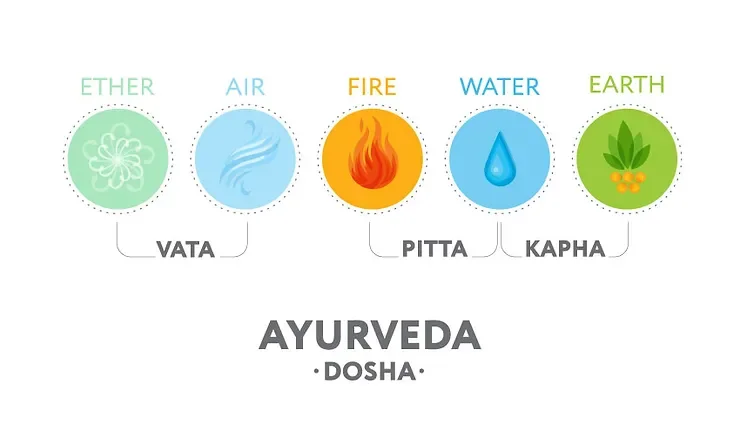
Ayurveda is a ‘wholistic’ science. Atleast that’s what you must have heard or read somewhere, before reading this post. But have you ever given it a thought? As to what exactly does it mean by wholistic? What difference does it make? Is it really that important or is it just a glamorous word in a medical field?

The subject (or in layman’s language a patient) has remained always of tertiary importance for modern science. The centre of attraction was and is – the disease and not the ‘diseased’. This omission substantially narrowed down the lens of observation. This disease centric approach viz. objective (and indeed an important aspect) cuts down the equally important – subjective approach i.e. \ body centric which in simple words means observing not just a disease but a person suffering from the same.
Ayurveda contemplates….It eyes both the aspects equally. Because understanding a sufferer, is as equally important as understanding the suffering. That’s what wholistic is all about!
The fundamentals on which this all rests are the 3 pillers – dosha (vital and ultimate elements), dhatu (various bodily tissues holding the body) and mala (excretory products).Major among these, are 3 doshas owing their unquestionable significance to authoritative management of whole body through remaining two i.e. 7 dhatus and 3 malas.
They are the ultimate, presidential and inescapable entities of human stratums.
They have presiding effect on every material – immaterial, anatomical – physiological, physical – psychological features of our bodies. Their working area is extended from head to toe, leaving nothing out of their order.
If this is so, how do they do it?
We are an integral part of Mother Nature. Everything we need for living is resourced from it. We arise from it, we live with it and unite with it after death. This observation made the ancient physicians to think on the similitude between human body and nature. And in the process of understanding, they reduced the energies of nature to threefold – air, fire and coldness which represent motion, conversion/change and uniting/associating forces respectively in outside world. These three express themselves in the inner environment of human body as – Vata, Pitta and Kapha.

Every metabolic function happening in a living body is a part and parcel of doshic system.
Let’s try to comprehend…
Every movement – be it your respiration, pumping of your heart, food carriage through digestive track, excretion, functions of your senses & mind and every motion occurring in your body is governed by Vata. Along with these, speaking, hearing, tactile sensation, keeping digestion at optimum level, joint movements, maintaining freshness & enthusiasm are all exercised by Vata.
Though our body is a miniature expression of a nature, there are differences. You can’t just go in open and eat whatever you like and expect your body to grow. Change is mandatory. Pitta, embodying the functions of fire from outer environment, is responsible for change in a form of anything entering a body from outside so as to get adapted and assimilated to our inner environment. It is responsible for digestion, vision, skin color & its glow, temperature regulation of body and many others.
Kapha on other hand is an associating force, responsible for uniting and connecting different tissues and cells and is directly responsible for growth. Understanding various tastes, unobstructed joint movements by providing those with cushions in between, strength, virility are maintained by Kapha.
Same features of motion, change and association can be attributed at the level of psyche. A controlled motion of thoughts without bewildering speed by vata, analytical thinking of perceived thoughts by pitta and stability and calmness under any circumstances by kapha maintains psychological health as subtly as nature of mind.
The quantitative and qualitative balance of these three is critical for health. If one of them goes off balance, illness comes in. Their equivalence is given so much importance by Ayurvedic texts and physicians that their harmony is virtually considered as health and disharmony as illness.
Remember,
1. Wherever there is motion there is vata,
2. Wherever there is change there is pitta and
3. Wherever there is association there is kapha.
This is the most subtle yet clinically and practically expounding principle of Ayurvedic system of health, going beyond boundaries of country, cast and creed.
And understanding them is the first step taken towards healthy and happy life
To learn more about the Doshas, enroll in our wellness course at Samvit Chakra. It is explained in lecture 8 by wellness professionals. Let’s embrace the science of life and find a path to lasting health and harmony.

Dr. Gayatri Mulye
Recent Posts
Recent Comments
- Robertfrago on Discovering Ayurveda: Unveiling Ancient Healing Wisdom.
- TravisFaw on Discovering Ayurveda: Unveiling Ancient Healing Wisdom.
- JasonCon on Discovering Ayurveda: Unveiling Ancient Healing Wisdom.
- Suchita Dhamale on Stress and Anxiety in Teenagers: A Guide to Managing Your Wellbeing
- Meghana Marathe on Stress and Anxiety in Teenagers: A Guide to Managing Your Wellbeing

0 responses on "The Three Company."